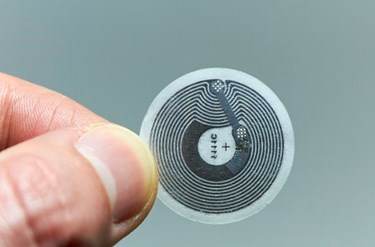How Healthcare Is Leveraging Data Capture And Tracking Technologies
By Megan Williams, contributing writer

You might be familiar with data analytics applications in healthcare, specifically the use of EHRs to track patient populations, but that’s only the tip of the iceberg. The technologies aren’t exactly new, but data capture and tracking technologies are starting to take a foothold and bring new levels of insight to healthcare providers willing to take a deeper look at the data these technologies help to collect.
The Prediction
As far back as 2011, real-time locating systems (RTLS) were being touted as a smart investment for facilities looking to curtail costs. Some facilities had been reported as buying two to three times the medical devices they needed (because of loss issues). A report released by KLAS revealed that while only 10 to 15 percent of healthcare facilities were using RTLS, 95 percent of those facilities saw operational efficiency benefits. Much of the conversation around RTLS at that time was around topics like improving patient flow and cutting back waiting room time.
The Fulfillment
Today, this technology is an integral part of a patient-focused vision of healthcare. Recently, Sanford Health (a nonprofit system operating in nine states in the U.S.) reported using the technology as a central pillar in reversing traditions related to patient care.
Sanford uses RTLS to cut back on patient wait times, but there’s more. The hospital plans to begin monitoring the kind of data it’s receiving from its systems and how effective that data is. This will give their individual facilities insight to adjust for situations where, for example, a patient brings several small children with them, has specific issues around their medication, or can’t sit too long in an exam room for medical reasons. That information is linked to the patient’s ID badge so that medical staff can act accordingly.
Mobile solution provider HealthID is using near field communication (NFC) in disease management. Their system uses wristbands and ID cards with built-in tags that are coded with a unique ID number, linked to a user’s health information. The system includes an application that users can access via phone or tablet and use for help in managing chronic conditions (i.e., taking medications and monitoring other tasks that must be performed on a daily basis). HealthID’s owner decided to apply this technology to disease management after one of his children was diagnosed with Type 1 diabetes and he noticed a lack of options available to patients for sharing medical related data.
Jeff Hoss, the VP of Sanford Clinic Fargo states, “We've reached a point where a growing number of healthcare executives are recognizing there was a world before automatically identified data — and a world after automatically identified data.”
For solutions providers, growth of these technologies in healthcare means interest in a wider variety of solutions — but also continued interest in more traditional uses. Paul Constantine, president of ScanSource POS and Barcode states, “Medical entities can obviously be cultivated with the compliance card, but tracking assets (be they medications, records or people) and limiting liability connected with any type of error have yet to become less important to them.”
